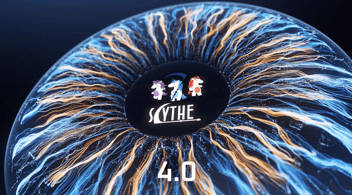The cyber threat landscape in 2025 is more unpredictable than ever. According to the World Economic Forum’s Global Cybersecurity Outlook 2025, organizations are facing a surge in ransomware, AI-powered attacks, and supply chain risks — all while dealing with regulatory pressures and cyber talent shortages.
Yet even with significant investments in security tools like EDR, SIEM, firewalls, DLP, and cloud security, most organizations are left wondering:
Are our security controls actually working when we need them most?
This is where continuous security controls validation comes in: a proactive, automated approach that ensures your defenses are not just deployed, but fully functional, effective, and resilient against real-world attacks.
What Is Continuous Security Controls Validation?
Continuous security controls validation is the ongoing process of testing, validating, and improving your organization’s security controls across the entire attack surface. Unlike one-time penetration tests or annual red team exercises, it uses automated adversarial emulation and validation (AEV) to continuously validate whether your security controls — including EDR, SIEM, firewalls, and DLP, are actually performing as intended.
It’s about moving from assumed protection to proven, measurable risk reduction, every day, not once a year.
Why Traditional Testing Isn’t Enough
Most organizations still rely on periodic testing, such as:
- Quarterly pen tests
- Periodic (or worse, annual) red teaming
- Vulnerability scans
But in today’s fast-moving environments, this approach leaves gaps:
- Security configurations drift over time
- Threat actors and their associated tactics evolve constantly
- Controls break or lose their effectiveness without anyone noticing
A test done six months ago tells you little about how your defenses will perform today. That’s why continuous security controls validation is becoming critical.
Benefits of Continuous Security Controls Validation
Real-Time Assurance
Know your security controls are functioning properly, not just installed.
Improved Visibility Across the Attack Surface
Identify blind spots across endpoints, cloud environments, and networks.
Faster, Targeted Remediation
Get immediate feedback on control failures, misconfigurations, and detection gaps — and fix them before attackers exploit them.
Smarter Prioritization of Resources
Reduce alert fatigue by focusing only on the controls and gaps that matter most.
Enhanced Cyber Resilience
Strengthen your ability to detect, respond to, and recover from cyberattacks through continuous improvement.
How SCYTHE Delivers Smarter Continuous Security Controls Validation
Legacy BAS solutions often rely on agent-heavy deployments, which can overwhelm IT and security teams with noise and operational overhead.
SCYTHE’s AEV approach is different.
- Strategic Agent Deployment: SCYTHE targets representative systems (e.g., critical servers, privileged workstations, key subnets), avoiding unnecessary agents on every endpoint.
- Realistic Threat Emulation: SCYTHE runs emulations focusing on critical adversarial behaviors, such as privilege escalation, lateral movement, data exfiltration, etc, that power today’s ransomware, phishing, and insider attacks.
- Low Operational Overhead: With fewer agents (or none) to manage, SCYTHE accelerates deployment, reduces complexity, and minimizes performance impact.
- Actionable, High-Value Insights: SCYTHE eliminates alert noise and delivers clear, prioritized findings to help you focus on the controls that matter.
In short, SCYTHE enables scalable, practical, and effective continuous security controls validation — designed for the real world.
Who Needs Continuous Security Controls Validation And Why Now
Continuous security controls validation is critical for:
- Security operations teams wanting to ensure their security tools are optimized and validated
- CISOs needing to report meaningful risk metrics to leadership
- Compliance and audit teams looking to meet frameworks like NIST CSF, ISO 27001, and DORA
- Infosec teams responsible for securing hybrid, multi-cloud environments
With today’s increasingly sophisticated attacks, evolving compliance demands, and constant technology change, continuous security controls validation is no longer optional — it’s a foundation of modern cyber resilience.
Key Use Cases
- Validating new tool deployments to ensure proper configuration and performance
- Post-incident analysis to test where controls failed and how to improve
- Compliance reporting with clear, audit-ready evidence
- Board-level risk reporting with quantifiable KPIs
- Red, blue, and purple team exercises to sharpen detection and response capabilities
Getting Started with Continuous Security Controls Validation
Here’s how to get started:
- Focus on high-value controls and assets — domain controllers, cloud workloads, privileged accounts.
- Align testing with frameworks like MITRE ATT&CK, NIST CSF, or ISO 27001.
- Use automated platforms like SCYTHE to reduce manual effort and scale effectively.
- Establish a regular reporting cadence to track progress and drive continuous improvement.
In a world of rapidly changing threats, knowing your security controls work isn’t a luxury — it’s a necessity. Continuous security controls validation gives you the power to move from guesswork to certainty, improve risk posture, and strengthen resilience.
With SCYTHE’s enterprise-ready approach, you can validate your defenses continuously, focus on what matters, and keep your organization one step ahead of attackers.
